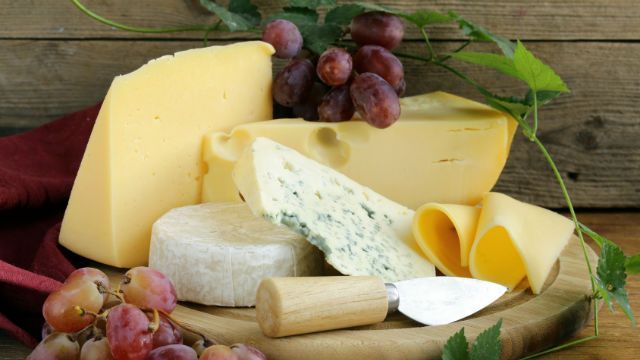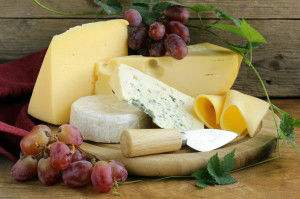
Kraft Foods, the manufacturers of the ever-popular Velveeta, have recalled 260 cases of the “Liquid Gold” for reasons of an insufficient amount of preservatives.
Velveeta in Wal Mart Stores across 12 states has been taken off the shelves due to fear of food-borne illness.
The very fact that Velveeta contains so many preservatives that it does not need to be refrigerated until opened should be a red flag. The recall for preservative shortages is an even greater reminder that this “cheese food” is not a real cheese, and is certainly not a nutritious food. In fact, foods labeled as “cheese food” as opposed to simply “cheese” are only required to be 51 percent cheese.
Luckily, there is a natural, delicious substitute for Velveeta in all your favorite recipes: real, organic cheese.
While it contains many of the same primary ingredients as cheese, Velveeta is so highly processed that it in no way resembles actual cheese anymore; in consistency or flavor. The preservative lacking in the recalled Velveeta batches was sodium citrate, a processed form of citric acid derived from molasses or (likely genetically modified) corn. While citric acid is a naturally-occurring substance in many fruits and veggies, its processed counterpart is not.
To get its signature bright yellow-orange color, Velveeta manufacturers use apocarotenal, a synthetic pigment which is also used in cosmetics and pharmaceuticals, and annatto, which is derived from the achiote tree, but is again highly altered through chemical processing. Annatto is also one of the ten most common food allergens in the US.
Another ingredient on Velveeta’s list is calcium phosphate, which may seem innocent enough at first glance, as natural phosphates occur in real cheese, as well. However, some research has associated processed phosphates with a higher risk of heart disease in healthy individuals, and a higher risk of death in people suffering from chronic kidney failure.
Other processed cheeses, such as the famous “American” cheese, are not much better. They are often made from the milk of cows fed GMO feeds and administered growth hormones and antibiotics, heated to very high temperatures during processing, and doused with a variety of preservatives. If you see “cheese food” on the label, steer clear. Sadly, unless it is organic, even real cheese is made with milk from GMO-fed cows.
Real, organic cheese, on the other hand, is an excellent source of protein and calcium, and adds some vitamin D to your diet. Depending on the variety, cheese also contains varying amounts of vitamins A, B2, B12, magnesium and phosphorus.
The best choice for buying real cheese is to find a local, organic cheesemaker who uses only the best ingredients. You may pay a little more, but the benefits, not to mention the taste, will be worth it.
Or, you can make your own! The following two recipes are for real, delicious cheeses (one made with milk, and one vegan) you can make right in your kitchen.
Basic ingredients:
- A large pot
- Thermometer
- Measuring cups
- Wooden spoons
- Cheesecloth
- Cheese press
- Organic milk
- Rennet
- Cultures
Mozzarella Cheese
- In large pot, heat milk to 90°F, stirring frequently.
- When milk is at 90°F, add culture, stir well, cover, and allow to ferment for 45 minutes.
- After 45 minutes, stir well to homogenize the milk, and slowly fold in rennet.
- Allow the cheese to set for 60 to 90 minutes. You should see a layer of mostly clear whey floating on top of the curd.
- Using a long knife, cut the curds into 1/2-inch cubes and allow to set for 20 minutes. Do not stir.
- Slowly heat the curds to 100°F, stirring frequently. Once the curds are at 100°F, turn off the heat and allow to set for 5 minutes.
- Drain the whey from the curds.
- Fill your sink with 110° to 120°F water, and set the pot containing the curds into the sink. Allow to set at this temperature for 2 to 3 hours. Every 30 minutes, use your hands to press the whey from the curds and flip the curds over.
- Cut the curds into four equal pieces; these will be your balls of mozzarella. Set three of the pieces aside.
- Heat water to between 170° and 190°F. Pour the water over the first piece of mozzarella, working it with your hands until it is smooth, shiny and stretchy.
- Form into a ball and place in a bowl of cold water to firm up.
- Soak 1 cup of almonds overnight in water. Drain and pop off skins.
- Place almonds, a tablespoon of lemon juice, ¾ cup water, 2 tablespoons olive oil and garlic or desired herbs in food processor. Process until smooth.
- Place nut mixture in a nut-milk bag or colander lined with cheesecloth.
- Give a light squeeze and place in refrigerator overnight to set.
- You can use the cheese at this point, or if you want it more firm, place it in the dehydrator for six or more hours at 115 degrees F to form a rind.
-The Alternative Daily
Sources:
http://www.cbsnews.com/news/with-velveeta-recall-a-new-cheesapocalypse-emerges
http://whatisthatingredient.com/product.php?id=20
http://www.befoodsmart.com/ingredients/citric-acid.php
http://www.foodnavigator.com/Science-Nutrition/Phosphate-in-food-is-health-risk-that-should-be-labelled-claim-researchers
http://www.healthyeating.org/Milk-Dairy/Nutrients-in-Milk-Cheese-Yogurt/Nutrients-in-Cheese.aspx
https://www.thealternativedaily.com/choose-healthiest-cheese-dont-eat-types
https://www.thealternativedaily.com/dangerous-bacteria-lurking-cheese


